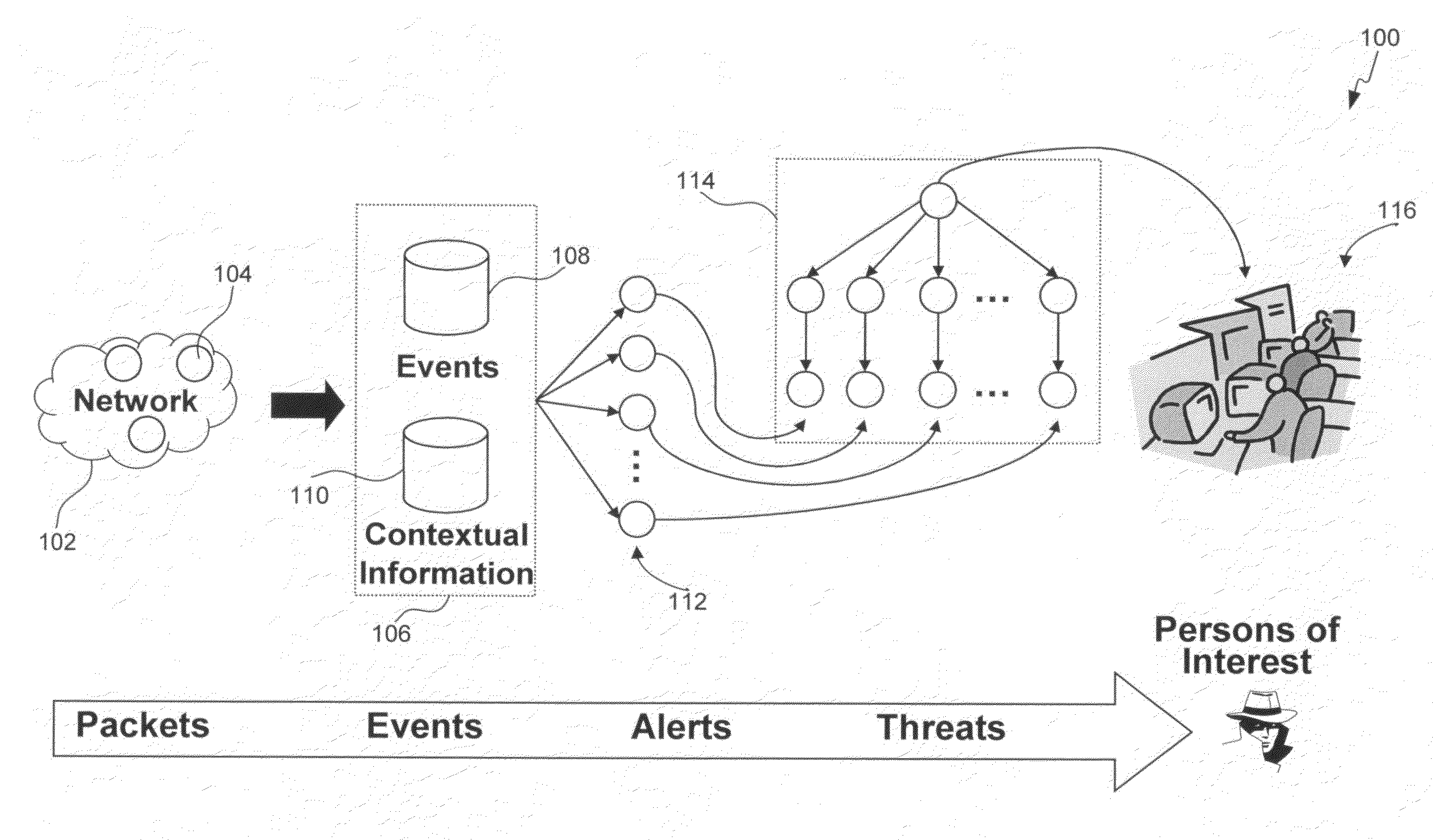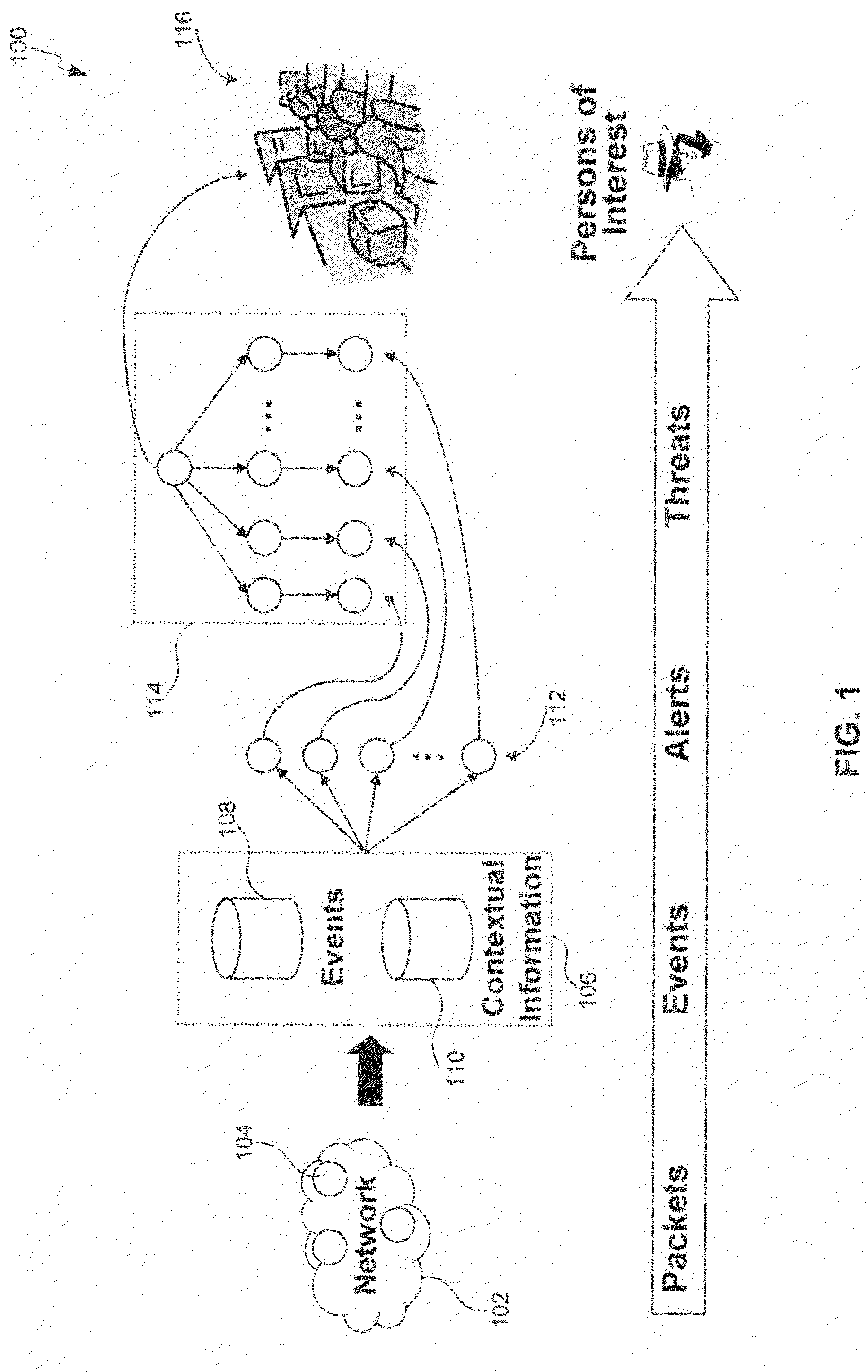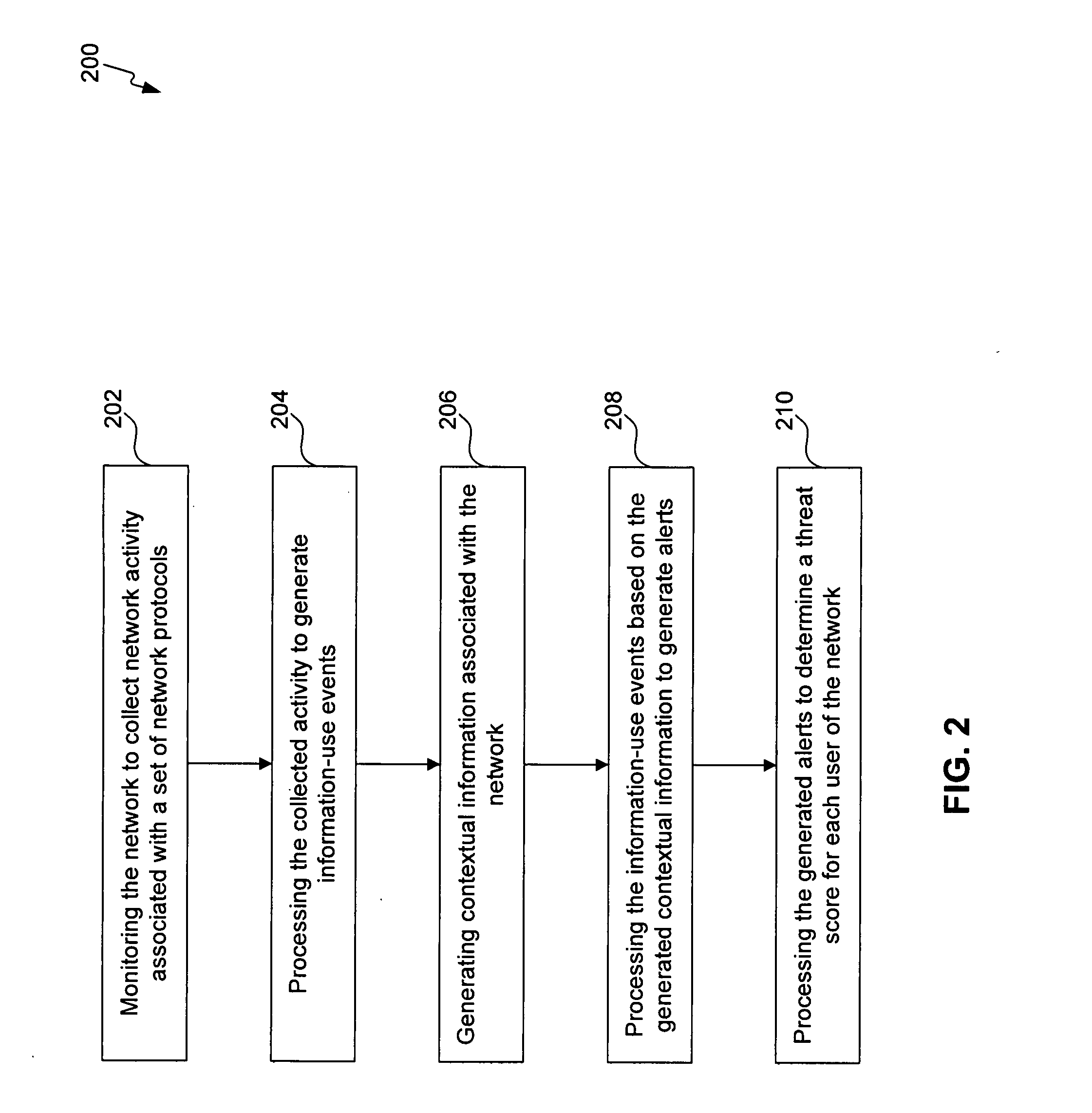Insider threat detection
a threat detection and insider technology, applied in the field of computer networks, can solve the problems of large amounts of information, difficult insider threat detection, and tremendous damage to corporations and national security
- Summary
- Abstract
- Description
- Claims
- Application Information
AI Technical Summary
Benefits of technology
Problems solved by technology
Method used
Image
Examples
example computer implementation
[0081]In an embodiment of the present invention, the system and components of the present invention described herein are implemented using well known computers, such as computer 902 shown in FIG. 9.
[0082]The computer 902 can be any commercially available and well known computer capable of performing the functions described herein, such as computers available from International Business Machines, Apple, Sun, HP, Dell, Compaq, Digital, Cray, etc.
[0083]The computer 902 includes one or more processors (also called central processing units, or CPUs), such as a processor 906. The processor 906 is connected to a communication bus 904.
[0084]The computer 902 also includes a main or primary memory 908, such as random access memory (RAM). The primary memory 908 has stored therein control logic 928A (computer software), and data.
[0085]The computer 902 also includes one or more secondary storage devices 910. The secondary storage devices 910 include, for example, a hard disk drive 912 and / or a r...
PUM
 Login to View More
Login to View More Abstract
Description
Claims
Application Information
 Login to View More
Login to View More - R&D
- Intellectual Property
- Life Sciences
- Materials
- Tech Scout
- Unparalleled Data Quality
- Higher Quality Content
- 60% Fewer Hallucinations
Browse by: Latest US Patents, China's latest patents, Technical Efficacy Thesaurus, Application Domain, Technology Topic, Popular Technical Reports.
© 2025 PatSnap. All rights reserved.Legal|Privacy policy|Modern Slavery Act Transparency Statement|Sitemap|About US| Contact US: help@patsnap.com



